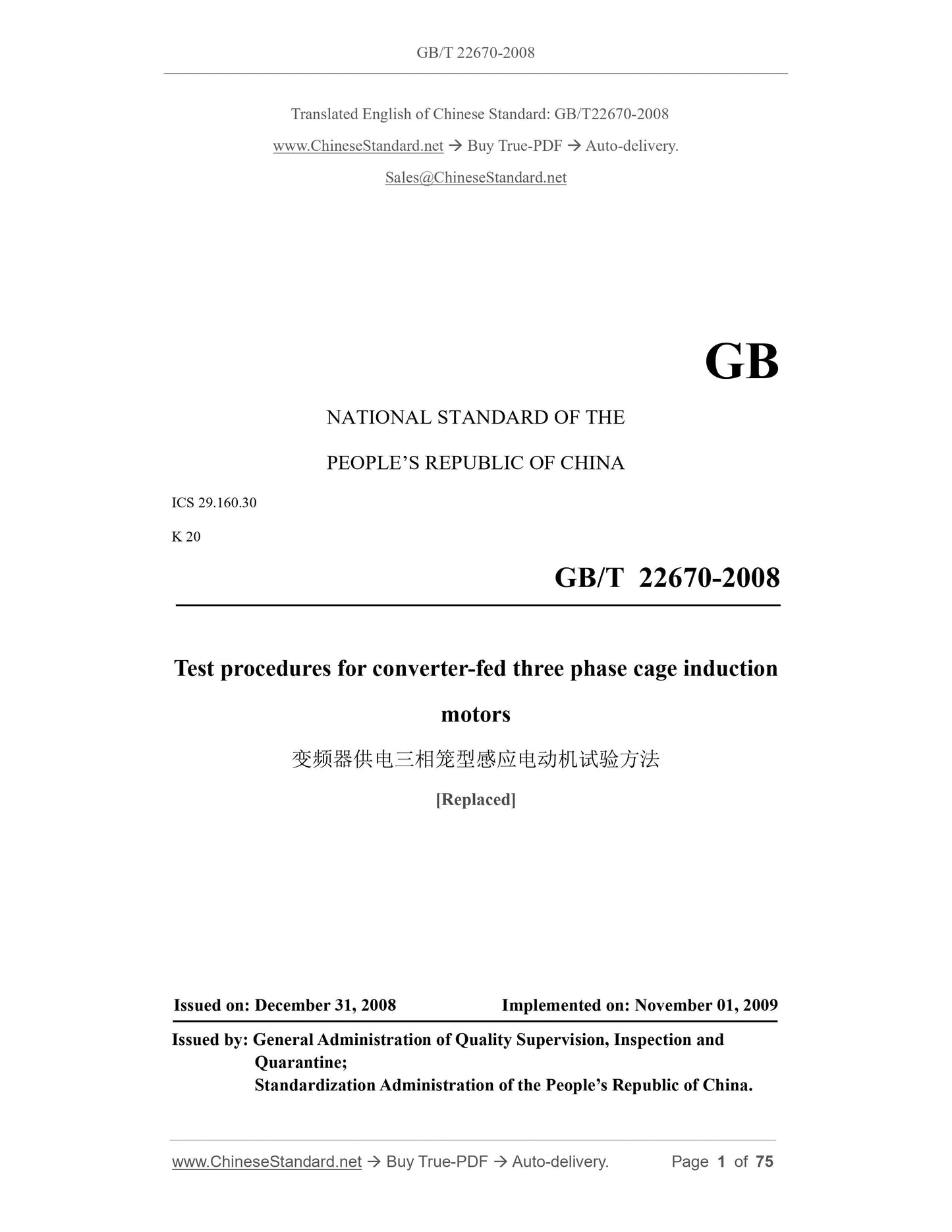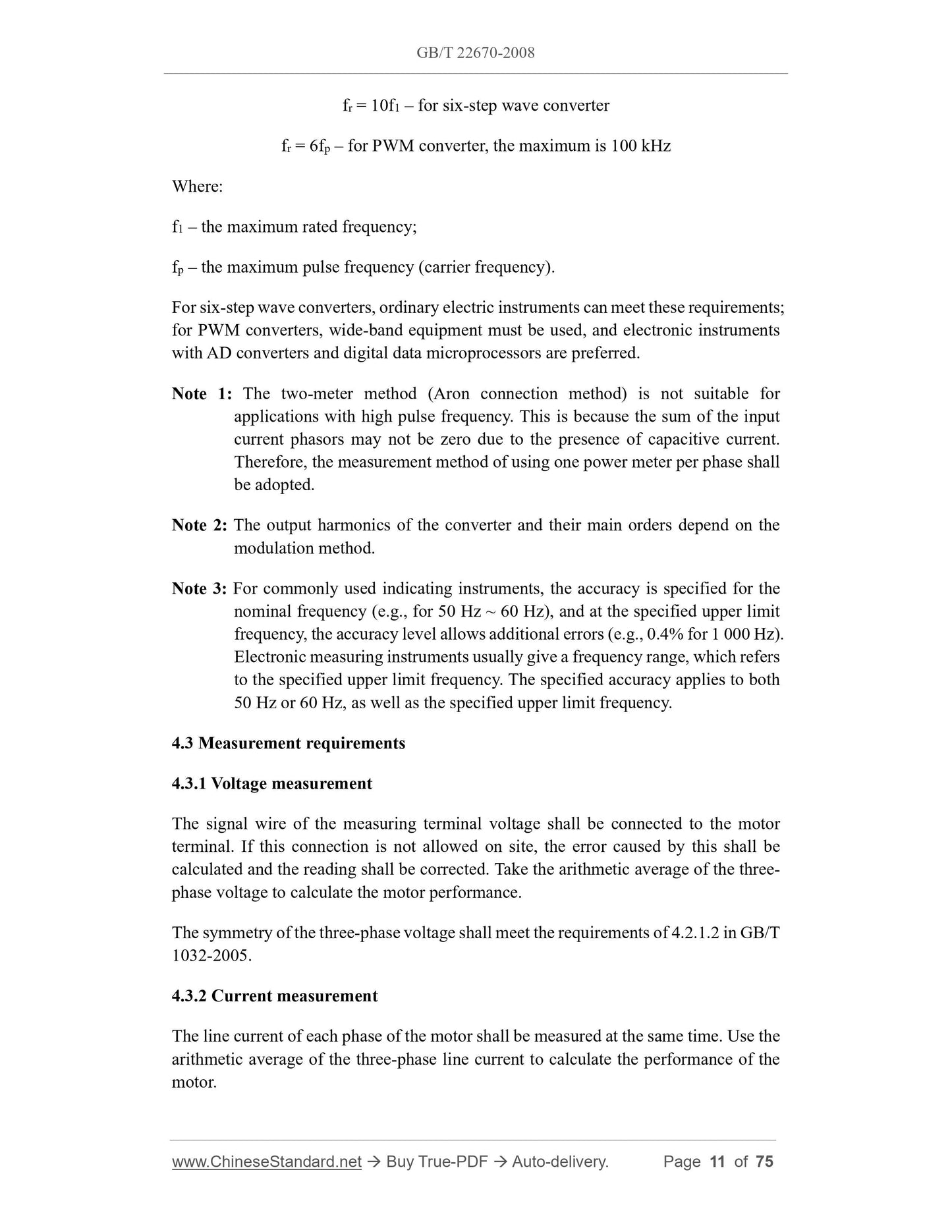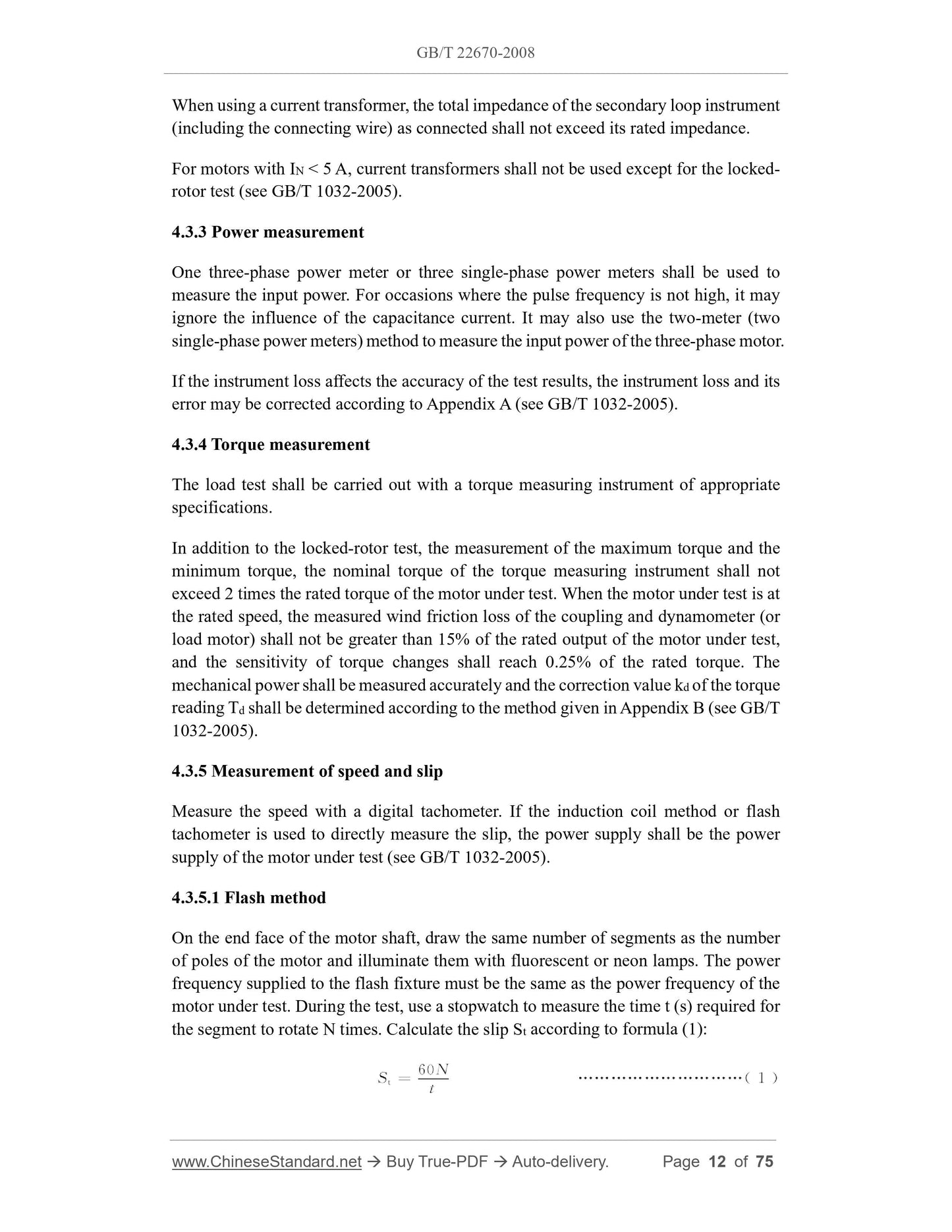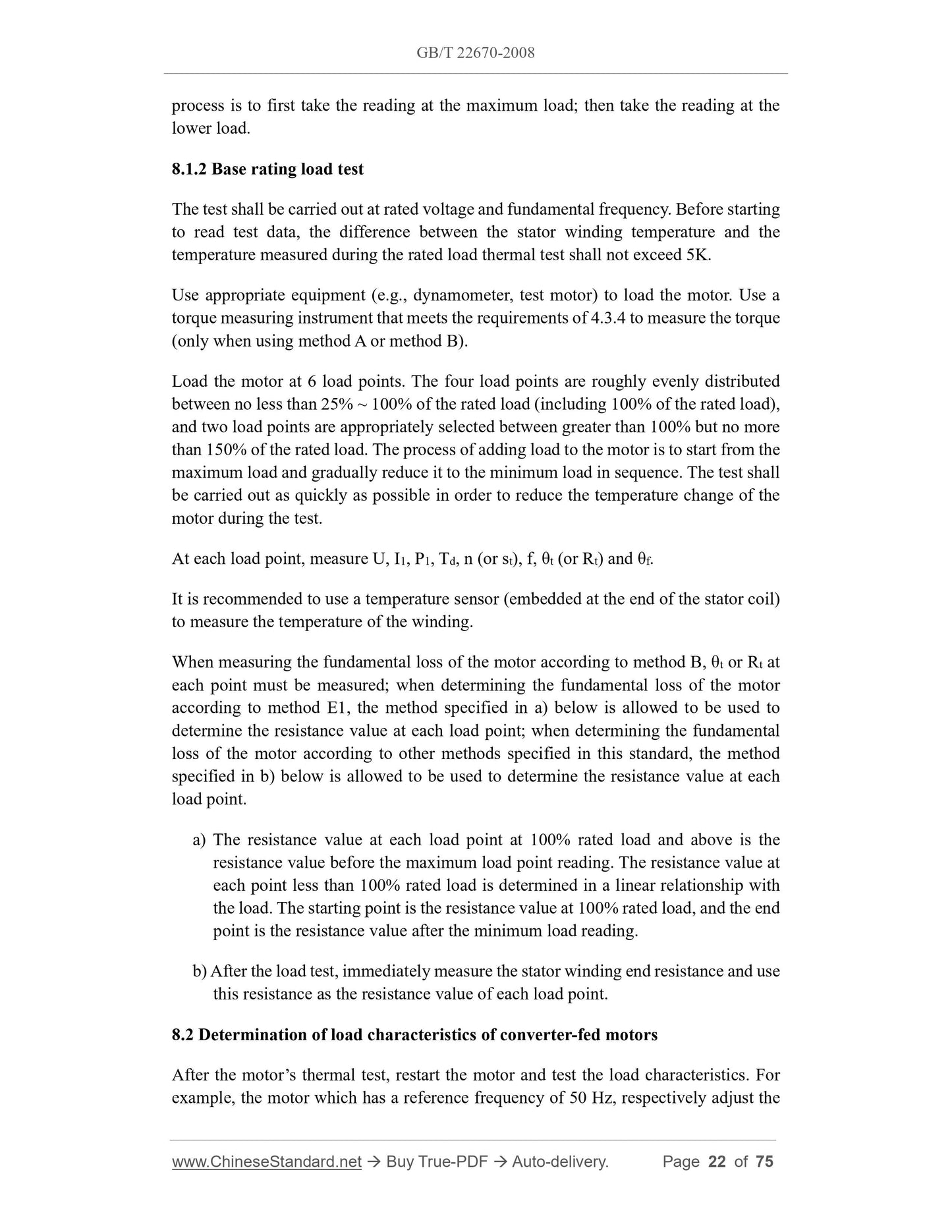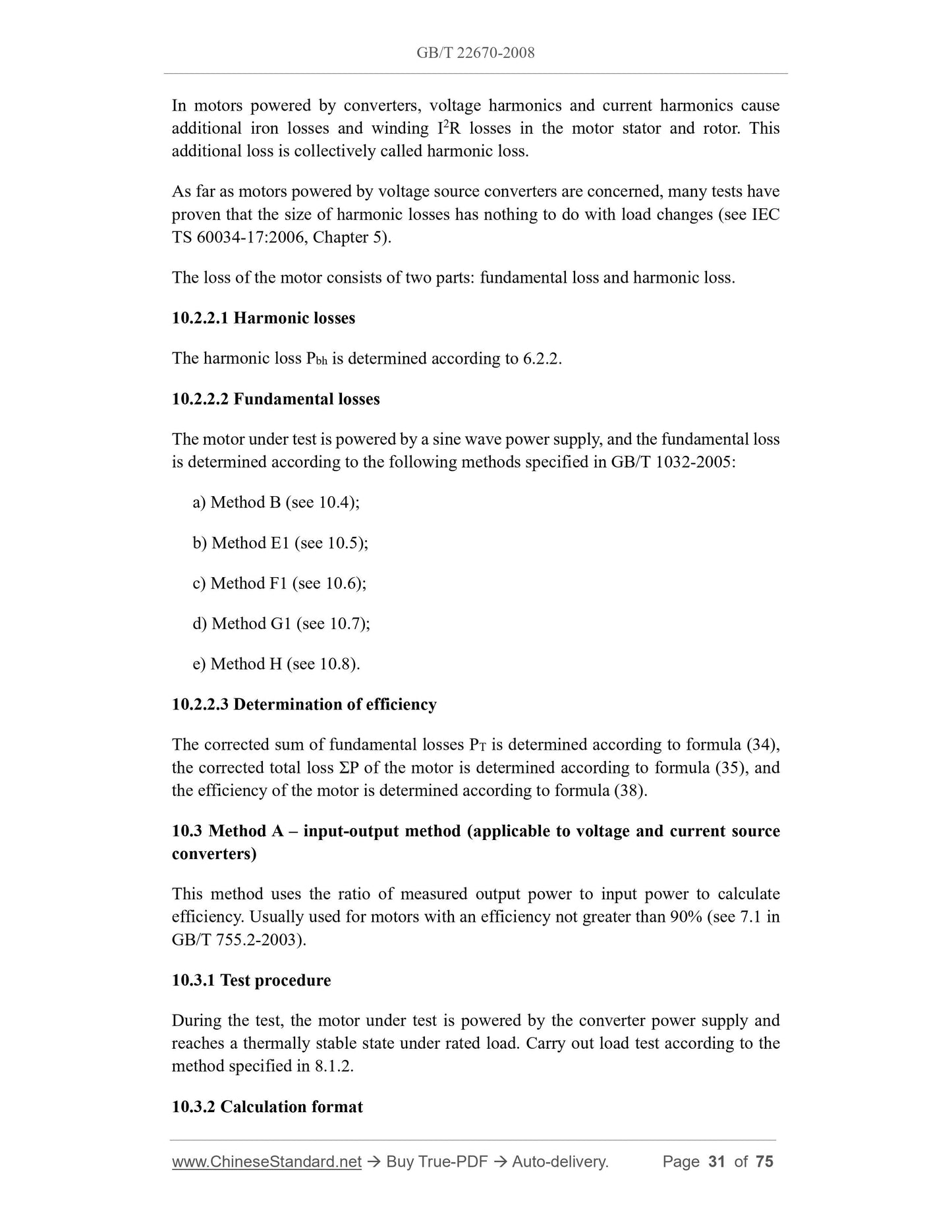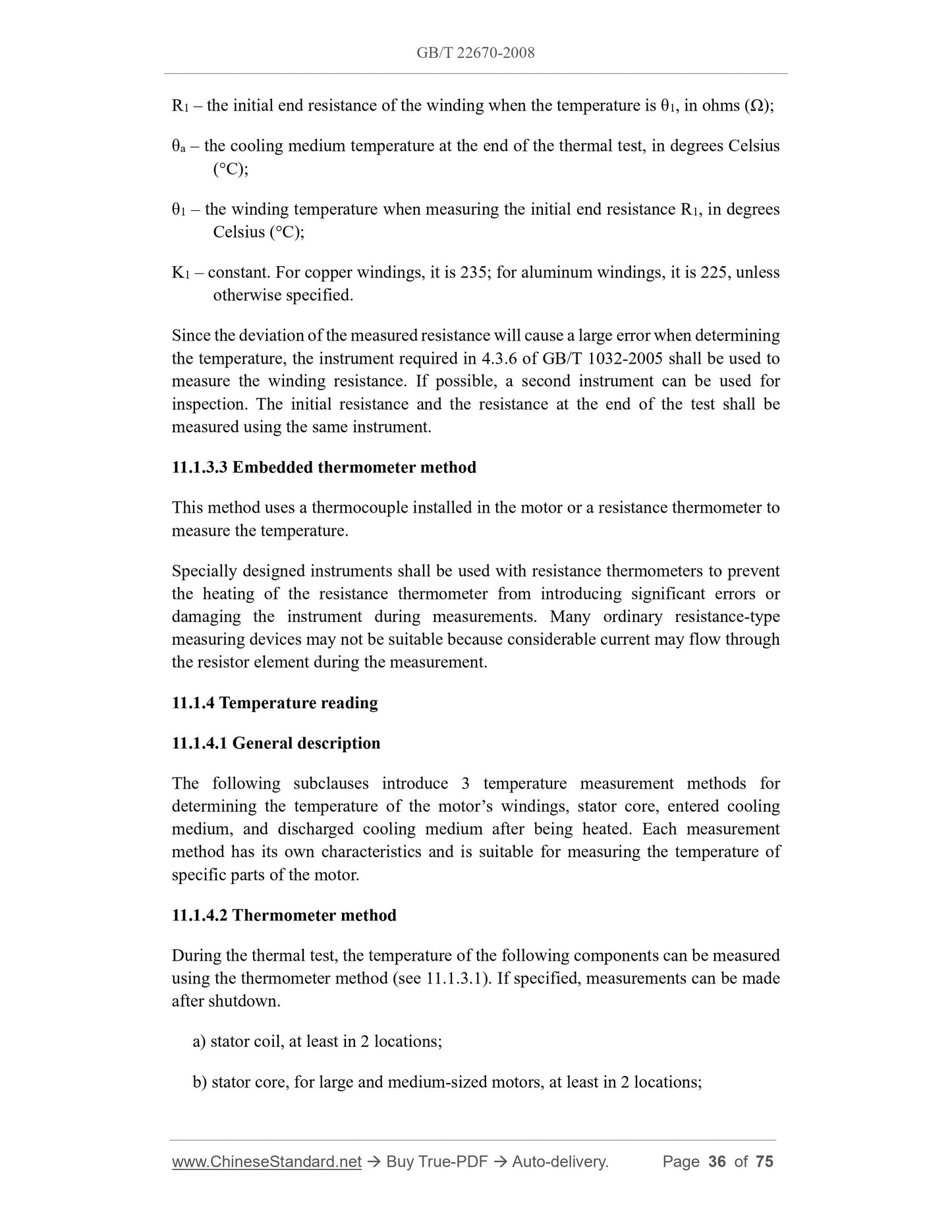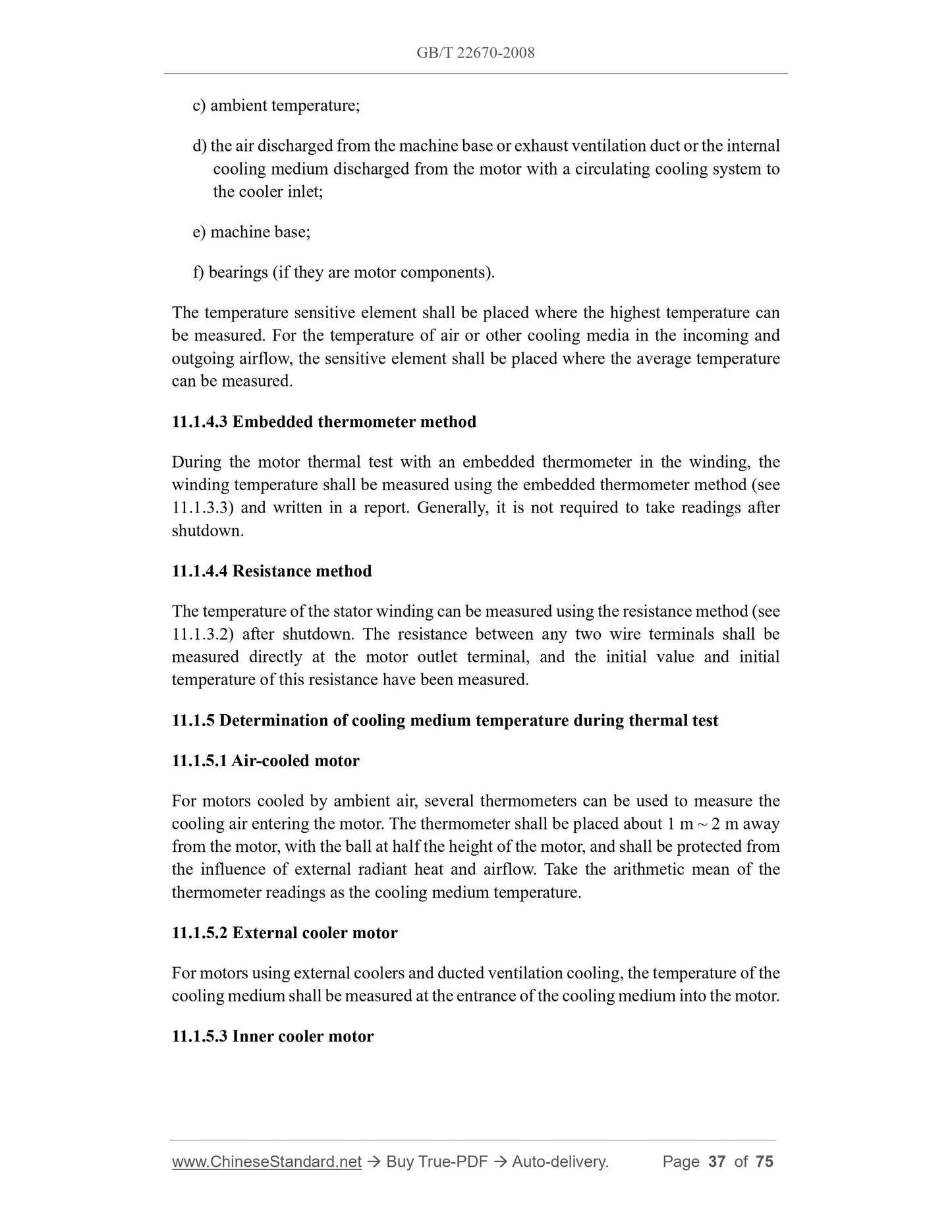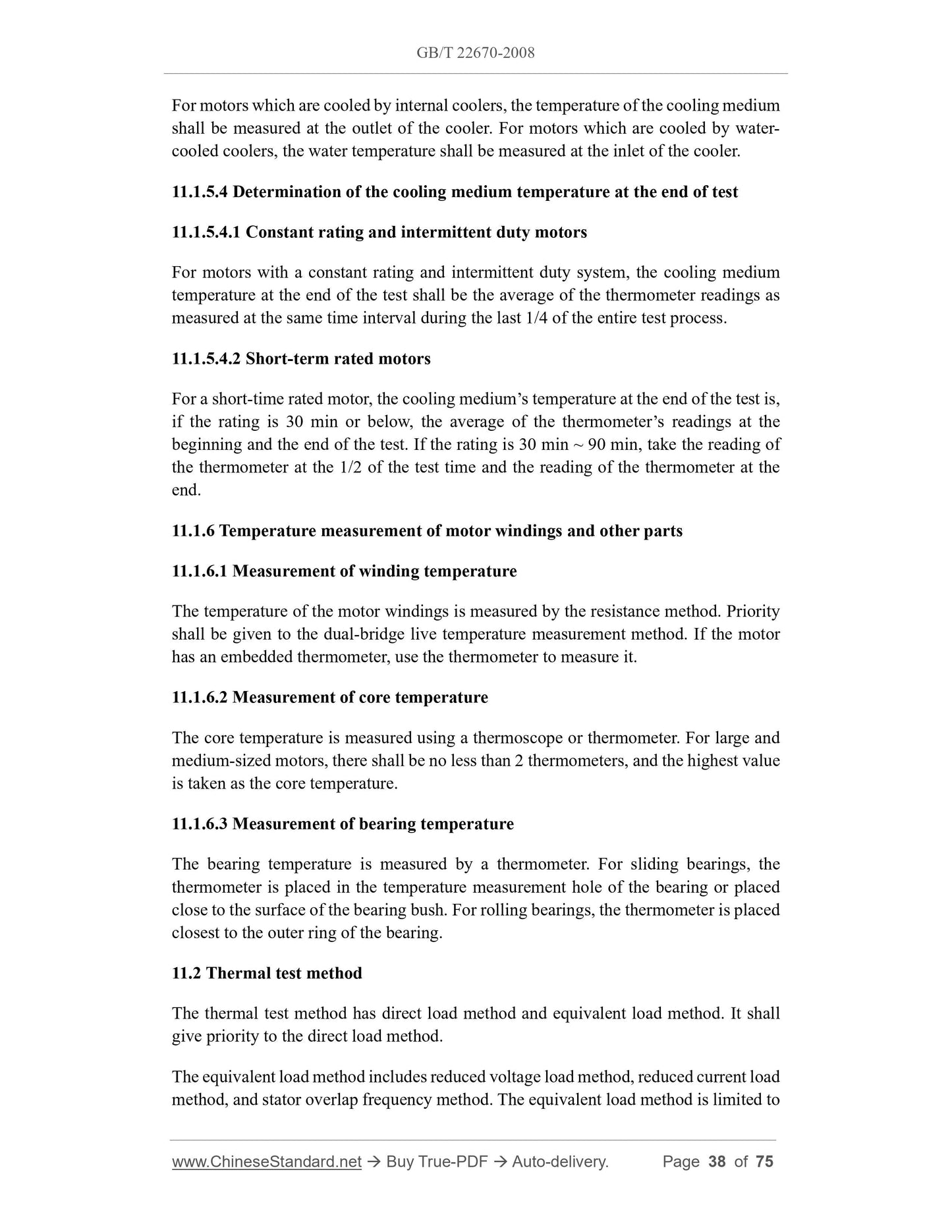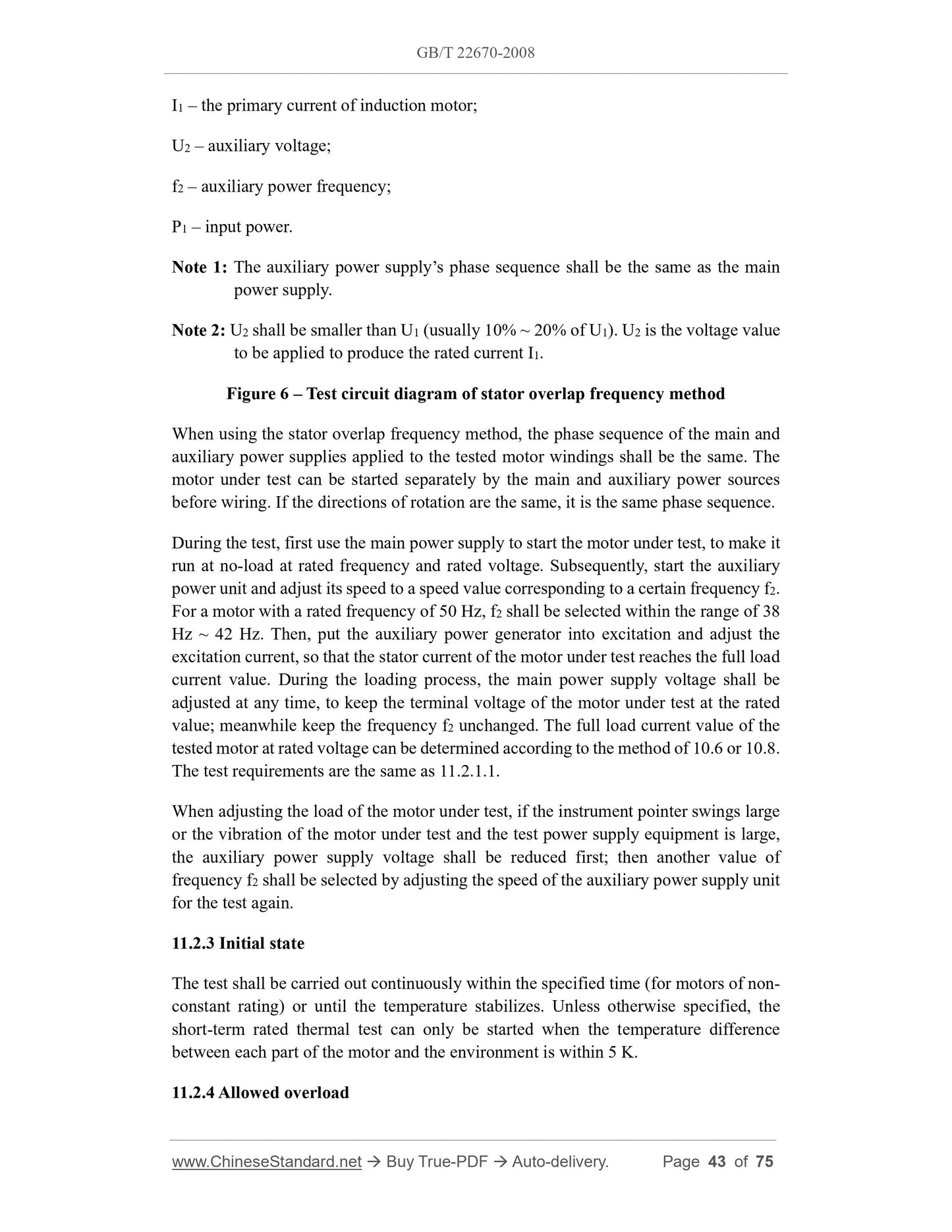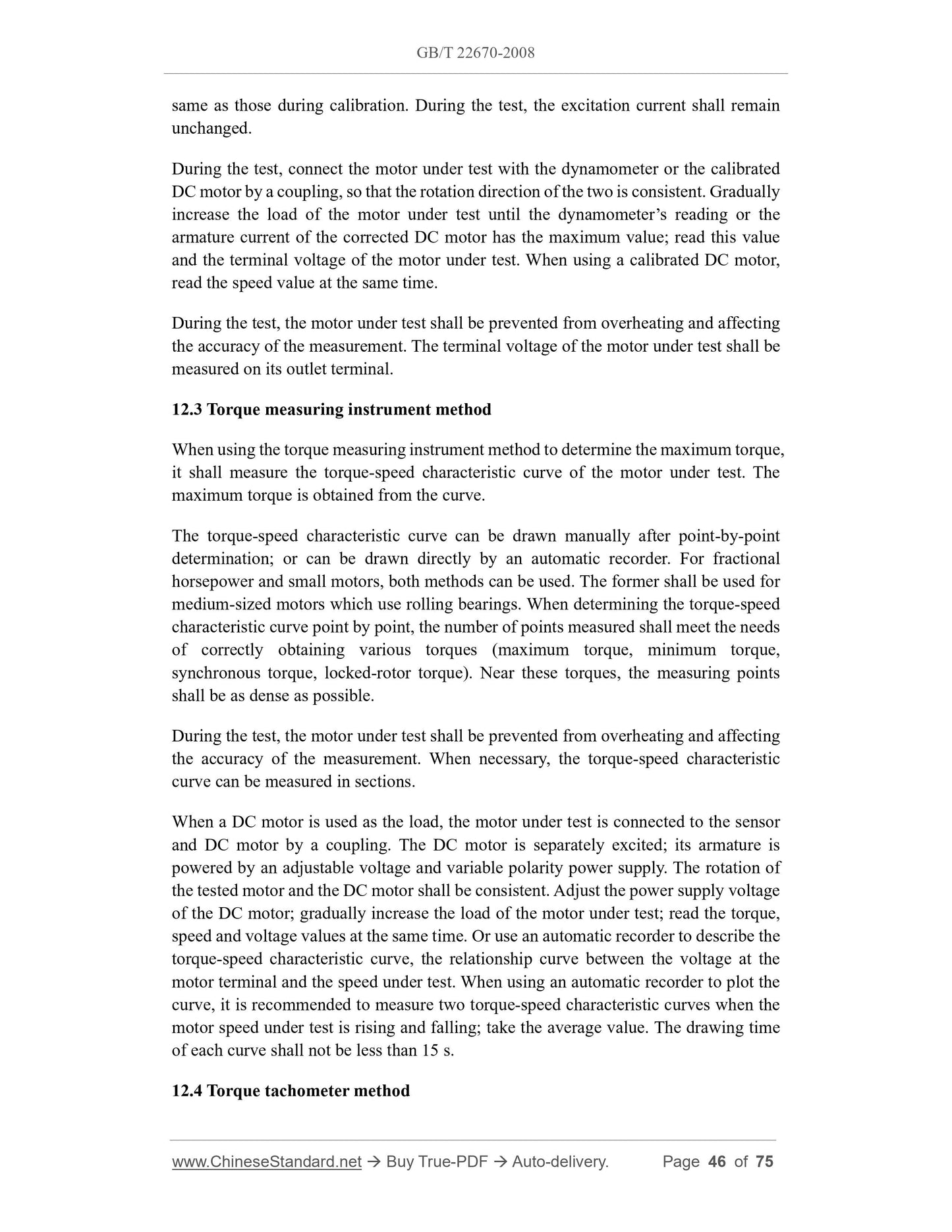1
/
of
12
PayPal, credit cards. Download editable-PDF and invoice in 1 second!
GB/T 22670-2008 English PDF (GB/T22670-2008)
GB/T 22670-2008 English PDF (GB/T22670-2008)
Regular price
$395.00
Regular price
Sale price
$395.00
Unit price
/
per
Shipping calculated at checkout.
Couldn't load pickup availability
GB/T 22670-2008: Test procedures for converter-fed three phase cage induction motors
Delivery: 9 seconds. Download (and Email) true-PDF + Invoice.Get Quotation: Click GB/T 22670-2008 (Self-service in 1-minute)
Newer / historical versions: GB/T 22670-2008
Preview True-PDF
Scope
This standard specifies the test procedures for converter-fed three-phase cage inductionmotors.
This standard applies to converter-fed three-phase cage induction motors.
This standard does not apply to traction motors.
Basic Data
| Standard ID | GB/T 22670-2008 (GB/T22670-2008) |
| Description (Translated English) | Test procedures for converter-fed three phase cage induction motors |
| Sector / Industry | National Standard (Recommended) |
| Classification of Chinese Standard | K20 |
| Classification of International Standard | 29.160.30 |
| Word Count Estimation | 45,460 |
| Date of Issue | 2008-12-31 |
| Date of Implementation | 2009-11-01 |
| Regulation (derived from) | Announcement of Newly Approved National Standards No. 23 of 2008 (No. 136 overall) |
| Issuing agency(ies) | General Administration of Quality Supervision, Inspection and Quarantine of the People's Republic of China, Standardization Administration of the People's Republic of China |
| Summary | This standard specifies the converter supply three-phase cage induction motor test methods. This standard applies to the inverter power supply three-phase cage induction motor. This standard does not apply to the traction motors. |
Share
